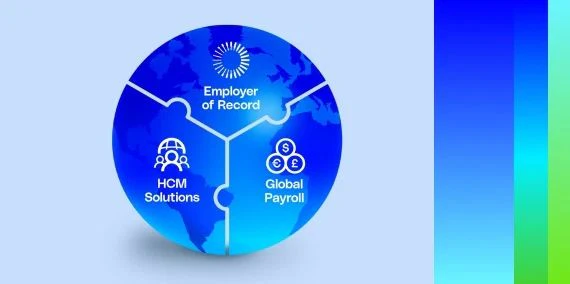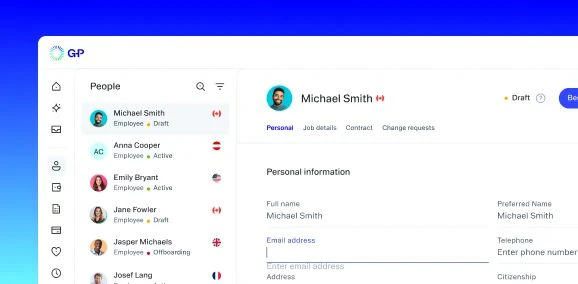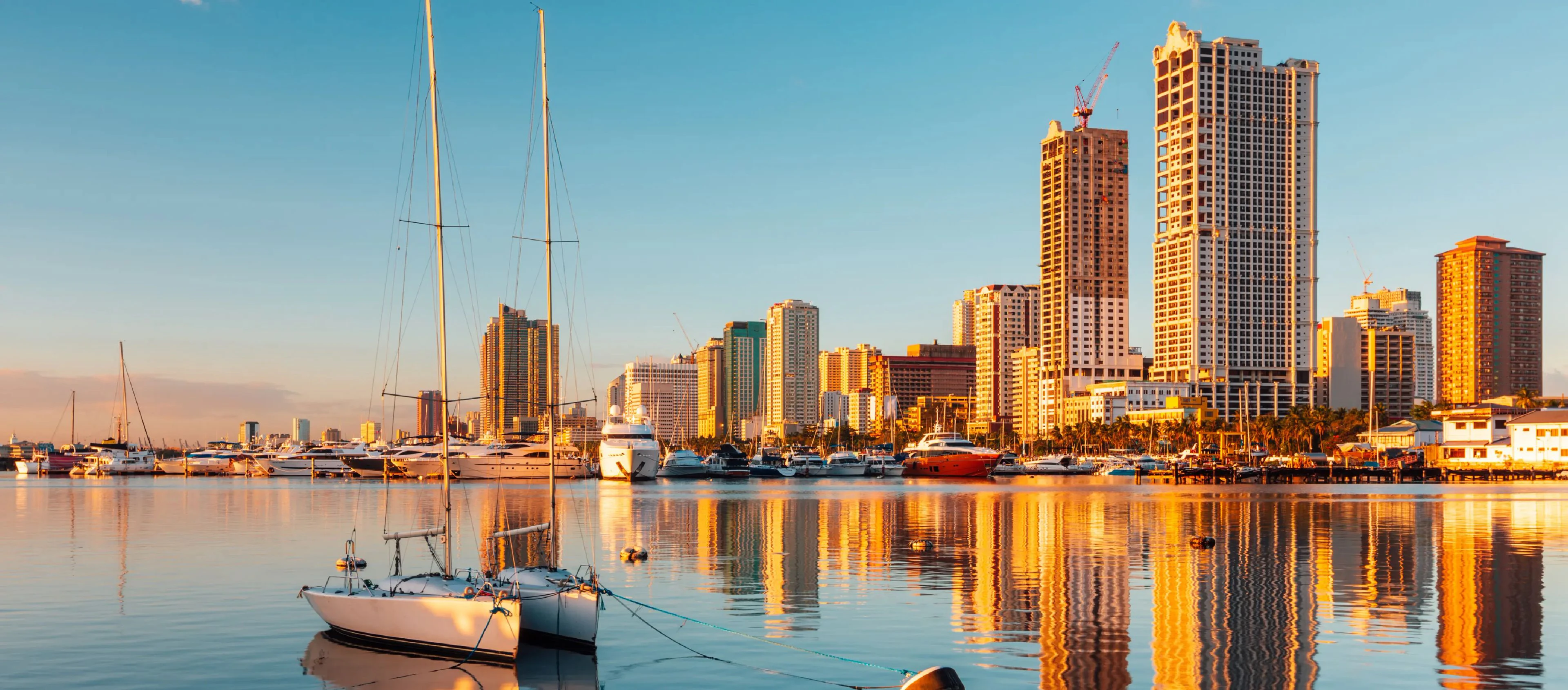The Philippines has a highly educated, multilingual workforce. The country is a top player in IT and is predicted to become a global leader in semiconductor manufacturing by 2030. The country’s location provides a strategic gateway to other Asia-Pacific markets.
Before expanding into the Philippines, you’ll need to understand contracts, taxes, wages, benefits, and other employment laws. Our guide will tell you everything you need to know about hiring in the Philippines.
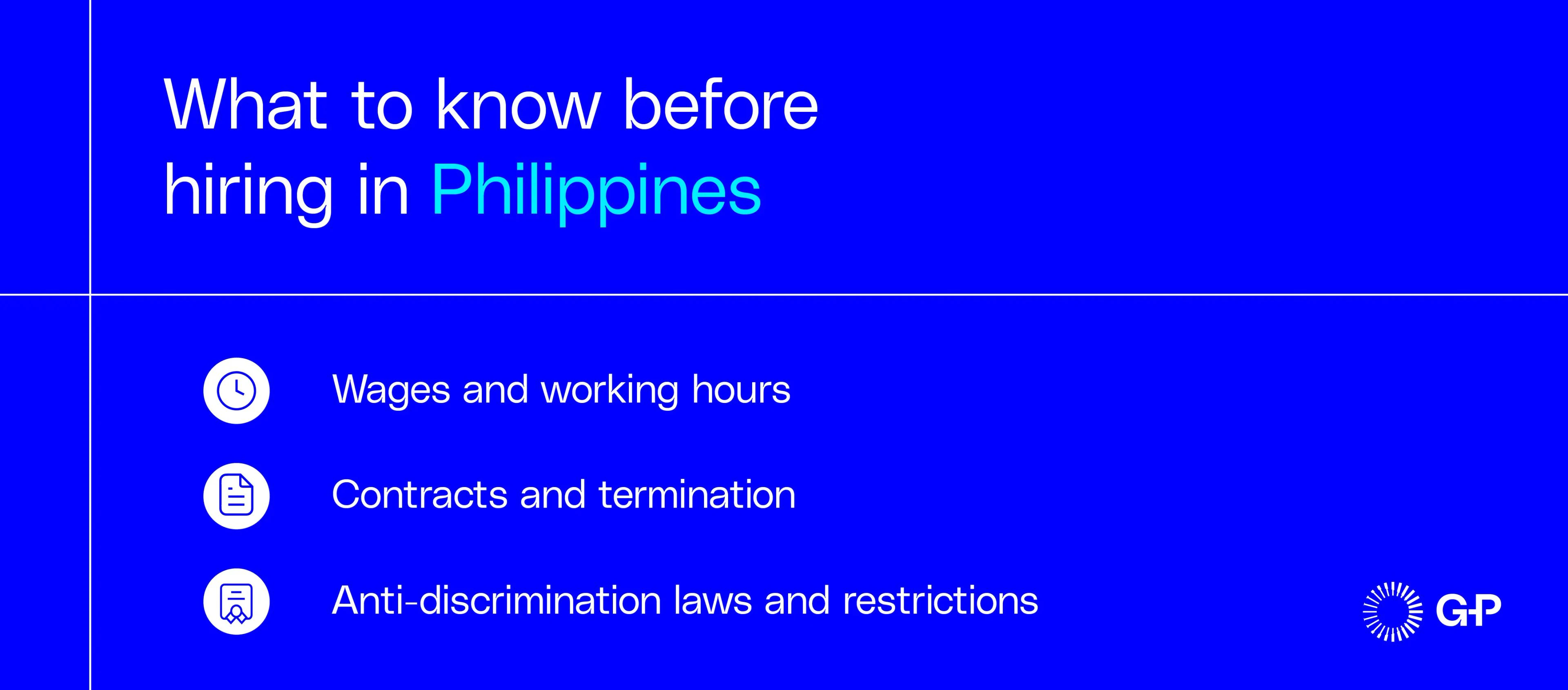
What to know before hiring in the Philippines
If you’re expanding your business into the Philippines for the first time, there are important legal requirements to be aware of. These norms and laws influence hiring practices in the Philippines and many aspects of the employer-employee relationship, including compensation and benefits.
G-P Gia™, our AI-powered global HR agent, can answer your toughest compliance questions across 50 countries — including the Philippines — and all 50 U.S. states. Reduce your reliance on outside counsel and cut the time and cost of compliance by up to 95% with Gia.
Here are five things to know about hiring in the Philippines.
1. Contracts and termination
In the Philippines, not all employment contracts have to be in writing. However, it’s best practice to provide written contracts for fixed-term, project-based, and probationary employees. Contracts must include:
-
The job title
-
Duties
-
Compensation and benefits
-
Work hours
-
Place of work
-
Probation period (can’t be longer than six months)
There’s no at-will employment in the Philippines. Terminations require due process and a just cause or an authorized cause. A just cause includes serious misconduct, willful disobedience, gross neglect, fraud, or crime. An authorized cause includes redundancy, retrenchment, closure, or incurable disease.
Employees terminated for authorized causes are entitled to separation pay. The amount depends on the exact cause and length of service.
G-P EOR has an Employment Contact Generator to help you draft compliant employment contracts that meet all legal needs and best practices in the Philippines.
2. Payroll and taxes
Employers withhold income tax from employee salaries based on tax rates set by the Bureau of Internal Revenue (BIR). As of 2025, the tax rates for individuals range from 0–35%. Employers must withhold the following from employee salaries:
-
Social Security System (SSS): Provides retirement, sickness, maternity, and other benefits. Both employer and employee contribute.
-
PhilHealth: National health insurance program. Both employer and employee contribute.
-
Pag-IBIG Fund: A government savings and housing fund. Both employer and employee contribute.
All employees qualify for a 13th-month pay. This must be paid no later than December 24. Some employers give an additional Christmas bonus or a 14th-month bonus. When considering these costs, remember you can streamline the entire employee lifecycle — including payroll — for your team members in the Philippines with G-P EOR. Pay your global teams in 150 currencies and easily add bonuses, commissions, and exceptions in just a few clicks.
3. Wages and working hours
The standard workweek in the Philippines is 40–48 hours. The standard workday is eight hours. Any work after this is considered overtime. Employees get an additional 25% of their regular hourly wage for each hour of overtime. This rate increases to 30% if overtime is performed on a rest day or holiday. Employees who work on regular holidays are entitled to at least 200% of their daily wage.
The minimum wage in the Philippines varies by sector and region. As of 2025, daily minimum wages in Metro Manila are the highest. Wages must be paid at least once every two weeks or twice a month. Intervals can’t be longer than 16 days.
4. Time off
Employees get five paid vacation days per year. Employees can use this time for any reason, such as a vacation, sickness, or other personal reasons. Unused vacation days are usually paid out at the end of the year. Workers at companies with less than ten employees, managerial employees, and other specific categories, such as domestic helpers, are exempt from this leave entitlement. However, employers can provide paid vacation leave as a fringe benefit.
Government employees are also exempt. Instead, they receive a more favorable leave entitlement under the Civil Service system. Government employees earn 1.25 days of vacation leave for each month worked.
The Philippines has two types of holidays: regular holidays and special nonworking days. There are 10 regular holidays, which are paid days off. These include New Year's Day, Good Friday, and Christmas Day. Special nonworking days are unpaid days off and change from year to year. In the past, these days have included Chinese New Year, All Saints' Day, and New Year's Eve.
Employees get 105 days of paid maternity leave with the option to extend for 30 days without pay. Solo parents receive an extra 15 days of paid leave. Employees who suffer a miscarriage or emergency termination of pregnancy are entitled to 60 days of paid maternity leave.
Fathers get seven days of paid paternity leave for the first four children, provided the mother is their legitimate spouse and they live together. Fathers must take this leave within 60 days of the child’s birth or miscarriage, and present marriage documents and birth certificates.
5. Antidiscrimination laws and restrictions
The 1987 Philippine Constitution guarantees equality before the law. It instructs the State to protect labor rights and promote equal employment opportunities for all, regardless of sex, age, or other status. Penalties for discrimination include fines, imprisonment, administrative sanctions, and civil damages such as reinstatement, back wages, and moral damages.
Top hiring hubs in the Philippines
Some cities in the Philippines are known for particular industries. Knowing what each city has to offer allows you to focus your hiring efforts in the right place and fill roles faster.
The top talent hubs in the Philippines are:
-
Metro Manila is the main economic and employment center. It includes cities like Makati, Taguig (Bonifacio Global City), Quezon City, and Pasig. These locations are home to several multinational companies and business process outsourcing (BPO) services.
-
Cebu City is known as the Queen City of the South. Cebu is a central hub for BPO, IT, and manufacturing employment. It has a lower cost of living than Manila.
-
Davao City is the largest city in Mindanao. Davao is a growing center for BPO, agriculture, and trade.
-
Clark Freeport Zone is a developing area for logistics, manufacturing, and BPO operations.
-
Iloilo City is emerging as a regional center for BPO, healthcare, and education.
Key industries in the Philippines
Understanding the Philippines’ main industries allows you to benchmark salaries and benefits. You can use this insight to make smart choices about where to invest and grow your workforce.
The main industries in the Philippines include:
-
BPO and IT: The Philippines is a global leader in BPO services. This includes call centers, IT support, and other services nationwide. The sector is driven by the country’s proficiency in English. Specialist talent includes customer service and technical support, finance and accounting professionals, and legal process outsourcing roles such as paralegals and legal researchers.
-
Manufacturing: This sector employs about 7% of the Philippines’ labor force. Key manufacturing industries include electronics and semiconductors, textiles, automotive parts, food and beverage processing, and chemicals. Specialist talent includes various engineering roles.
-
Construction: This is a major growth area. The sector is a big beneficiary of the government's Build Better More program. This initiative has funded PHP 9.14T for hundreds of projects and construction work on roads, railways, airports, and seaports. Specialist talent includes project managers, various engineering roles, and skilled trades.
-
Financial services: Banking, insurance, and fintech are well-developed in the country. There are over 300 fintech companies in the Philippines. Digital payments and mobile wallets are the leading subsectors. Specialist talent includes software developers and engineers, data scientists and analysts, and cybersecurity professionals.
-
Mining and energy: The Philippines has rich mineral resources. Mining includes gold, copper, and nickel. The country is also investing in renewable energy like solar, wind, and hydropower. Specialist talent includes engineers, surveyors, and geologists.
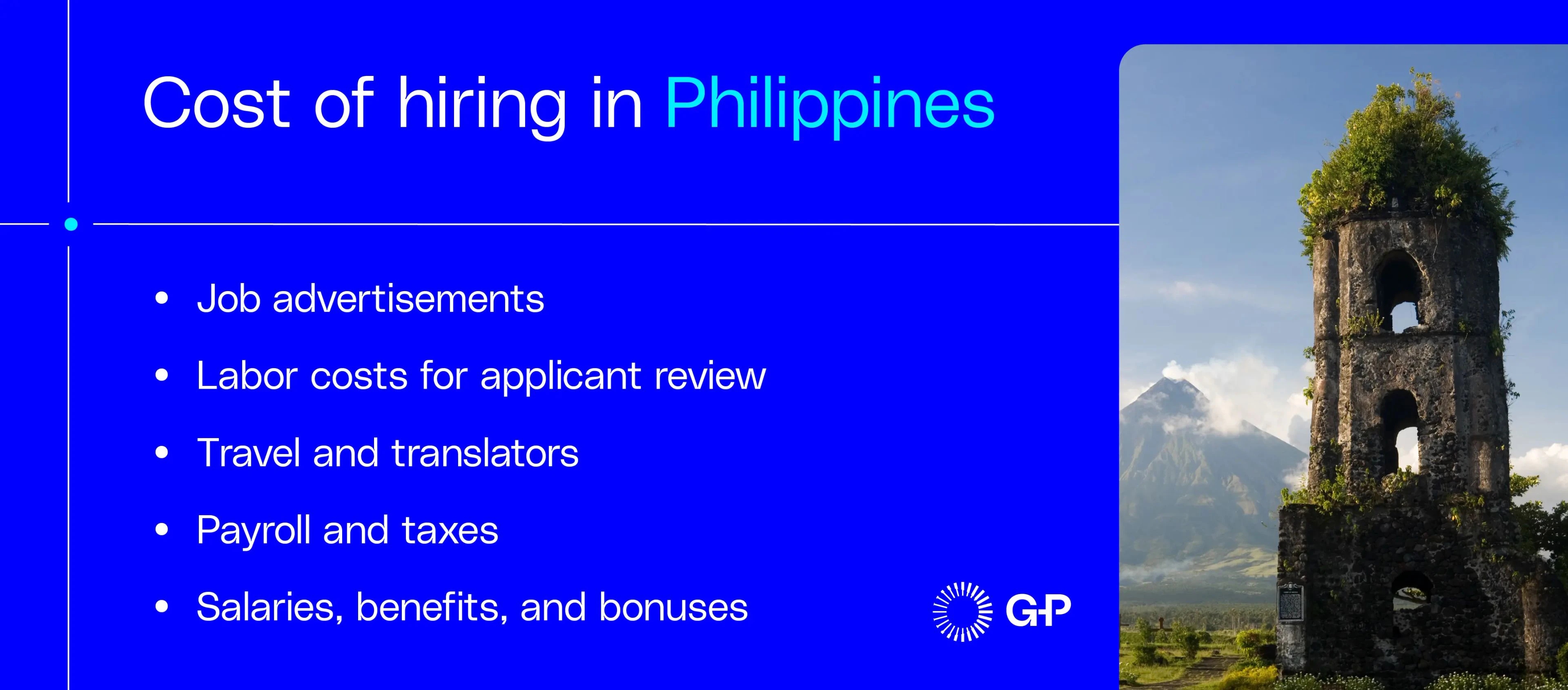
Cost of hiring an employee in the Philippines
Whether you’re hiring one employee or an entire team in the Philippines, expenses are inevitable. Budget for the following:
-
Entity setup (unless you partner with an employer of record)
-
Job advertisements
-
Labor costs for applicant review
-
Payroll
-
Taxes
-
Salaries
-
Benefits
-
Bonuses
-
Allowances
-
Insurance
-
Travel
-
Translator (if applicable)
According to G-P Verified sources fromGia, the employer burden rate in the Philippines, which includes costs triggered on top of salaries, is approximately 14.5%.
What does a company need to do to hire employees in the Philippines?
Make sure you cover these essentials before expanding your team in the Philippines:
-
Filing your official company name with the Securities and Exchange Commission (SEC)
-
Notarizing your treasurer’s affidavit and articles of incorporation
-
Getting your taxpayer identification number (TIN)
-
Creating a bank account
-
Depositing the minimum required capital
-
Receiving your business permit from the Business Permit and Licensing Office (BPLO)
-
Getting barangay clearance that certifies your company’s compliance with local community regulations
-
Getting your community tax certificate (CTC) so you can pay your yearly community taxes
Setting up a Philippines subsidiary can take weeks or months. Use G-P EOR to hire full-time employees in the Philippines without setting up your own entity. Build your team in the Philippines at a lower cost and with peace of mind that you’re doing so compliantly.

Steps to hiring in the Philippines
The hiring process in the Philippines is similar to the one you’re likely familiar with in your own country. The hiring process follows five basic steps: advertising the job, evaluating applications, interviewing candidates, sending job offers, and onboarding new employees.
1. Advertise job vacancies
Create a detailed job description and define the role based on responsibilities and qualifications. Make sure your job ads comply with antidiscrimination laws. It’s against the law to specify age preferences, limits, or specifications in job advertisements, or to require applicants to disclose their age or birth date.
Include the following information in your job ad:
-
Name of the hiring company
-
Contact details (name, phone, email)
-
Job title and description of duties
-
Required skills and experience
-
Work hours and location
-
Application opening and closing dates
JobStreet, LinkedIn, and Indeed are popular job sites in the Philippines.
2. Evaluate applications
Collect applications and review resumes. Screen candidates based on their qualifications, experience, and fit for the role. If you do an initial screening, avoid asking candidates about their age, marital status, or health.
3. Interview candidates
Interview candidates who made it onto your shortlist. You can do these interviews in-person or virtually. Use structured, nondiscriminatory interview questions. Gia can help you create questions that follow antidiscrimination laws in the Philippines, so you can find the best fit for the role while complying with local regulations.
4. Make job offers
Contact your chosen candidate to offer them a position with your company. Prepare a compliant employment contract. Include the job title, duties, salary, benefits, working hours, leave entitlements, and termination conditions.
5. Onboard new employees
Now you can onboard new employees. Collect the successful candidate’s pre-employment documents. These include government-issued IDs, medical certificates, NBI or police clearance, and a transcript of education records.You must also register the new employee with the Social Security System (SSS), PhilHealth, and Pag-IBIG Fund.
If you’re working with an EOR like G-P, you won’t have to worry about the administrative burden of onboarding. We’ll streamline the process, so you can focus on training your new hire and integrating them into your company culture.
Hiring contractors in the Philippines
Working with independent contractors in the Philippines can be a cost-effective way to test the market and build a presence, without the commitment of full-time employees. Contractors based in the Philippines understand local consumer behavior, rules, and business practices. They’ll be ready to start working quickly with their own equipment and established work processes.
Hiring contractors allows you to easily adjust your workforce based on your business needs, without the complexities and costs of employment.
Before you enter an agreement with an independent contractor in the Philippines, consider the following:
1. Employees vs. independent contractors
It’s important to understand the difference between employees and independent contractors. In the Philippines, employers hire employees to do work and, in return, pay them a regular salary and benefits. Independent contractors provide services. Unlike employees, contractors set their schedules, use their own equipment, and work on specific projects rather than having an ongoing role.
2. Penalties for misclassification
Classifying someone as a contractor when they’re not can lead to severe penalties. If misclassification occurs, you’ll have to:
-
Pay all back wages, unpaid salaries, and statutory benefits such as 13th-month pay.
-
Retroactively register the misclassified worker with the Social Security System (SSS), PhilHealth, and Pag-IBIG Fund, and pay all unpaid employer and employee contributions, including penalties and interest.
-
Face penalties and expenses for improper tax withholding and misclassification from the Bureau of Internal Revenue (BIR).
3. How to pay contractors in the Philippines
G-P Contractor™ takes away the messy, time-consuming process of hiring and paying international contractors. You can create and issue contracts and pay contractors with just a few clicks, all while ensuring a compliant process.
Hire employees and contractors in the Philippines with G-P
Our SaaS and AI-powered products – EOR, Contractor, and Gia – support companies as they build and manage global teams.
G-P is the recognized leader in global employment with more than a decade of experience; the largest team of HR, legal, and compliance experts; and a global proprietary knowledge base.
Make your expansion to the Philippines easier with G-P. Contact us or book a demo today.










